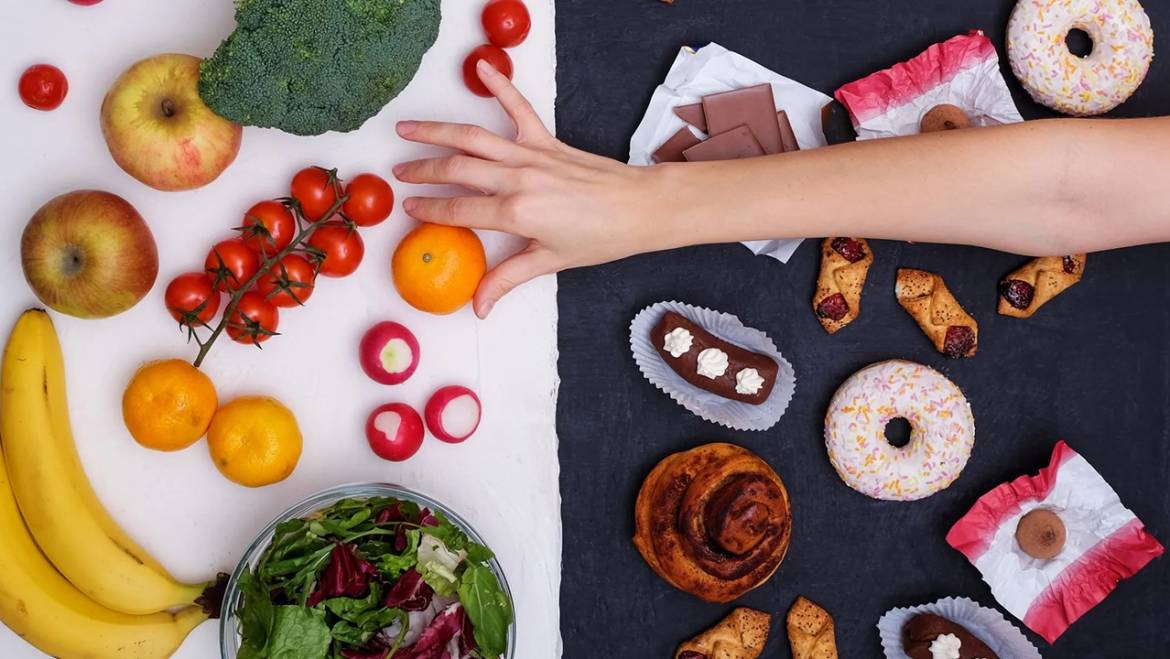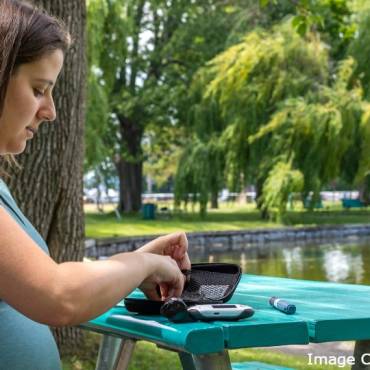Eating a healthy, well-balanced diet can help people control their high glucose levels and reduce the risks of associated health complications. A diet for high sugar levels can also influence how you feel and how much energy you have daily.
Diabetes is a chronic health condition that can affect both adults and children. Uncontrolled diabetes can contribute to serious health consequences, including kidney disease, heart problems, blindness, and other complications. Also, eating certain foods can cause a sudden spike in your blood sugar and insulin levels, increasing your disease risk. Accu chek Active can help you monitor your blood sugar levels. Use the device while receiving diabetes medication and follow a particular diet. Having diabetes does not mean you stop eating all your favourite dishes. People who have diabetes can enjoy most food items, but it is important to eat them in a smaller proportion. This article will discuss diabetes diet food that a person with Type 2 diabetes should avoid and provide useful tips to manage diabetes.
What’s the best diet for diabetes?
A diet for high blood sugar can help maintain general good health for a patient diagnosed with diabetes. A planned diet for sugar patients can better manage blood glucose levels, achieve target lipid (fat) levels, maintain healthy blood pressure and healthy body weight, and prevent the development of diabetes complications. Is a diabetic diet good for everyone? Well, there isn’t a specific diet for diabetic patients or a meal plan that suits everybody. Your health care specialist can recommend you to a dietician who can help design the best sugar control diet.
Here are the best diabetic diets for people with diabetes:
- The DASH diet (Dietary approaches to stop hypertension for high blood pressure) – This type 2 diabetes diet emphasizes the intake of vegetables, fruits, lean proteins, whole grains, low-fat dairy, and whole grains while discouraging added salt, sugar, red meat, or saturated fat.
- The Mediterranean diet – This diet pattern focuses on consuming a variety of fruits, nuts, beans, legumes, whole grain, seeds, and extra virgin olive as the main source of fat, fish rich in omega 3 fatty acids such as salmon or tuna, cheese, and yoghurt, with low to no red meat intake. Mediterranean-style diet can also be referred to as a diabetes weight loss diet as there’s evidence to show that the Mediterranean diet can promote weight loss and manage blood glucose levels.
- The Flexitarian diet – This diet pattern is a mix between vegan and vegetarian, with the flexibility to eat animal products in limited amounts. Most foods eaten are nuts, seeds, plants, fruits, vegetables, legumes, whole grains, and occasional organic, eggs, dairy, fish, or pasture-raised meat.
- The Ornish diet – Dean Ornish, a clinical professor of medicine, developed it. This diet eliminates poultry, fish, meat, added sugars, refined carbohydrates, high-fat foods, and alcohol and limits the number of seeds, nuts, and vegetables consumed.
In general, a diet that ranks foods from the healthiest to the least healthy is mainly plant-based; the only animal products allowed can be eaten are egg whites and non-fat dairy products, and fat should be in limited amounts, and high-fat foods such as seeds and nuts can only be consumed in small amounts. - The Mind diet – MIND stands for Mediterranean-DASH Intervention for Neurodegenerative Delay; it combines Mediterranean and DASH eating patterns which have shown benefits for brain health. It includes consuming moderate amounts of nuts, vegetables, fish, poultry, whole grains, beans, fish, poultry, olive oil, and wine. According to some research studies, good fats such as omegas present in olive oil and phytochemicals in berries might be responsible for producing neuroprotective effects.
Here it is important to note that no diet for high blood sugar is magical. However, understand your personal goals and capacity to adjust, and one of these Type 2 diabetes diabetic diets or meal patterns may be right for you.
A healthy eating pattern may help control your sugar levels. If you are looking for assistance with diet-controlled diabetes, a dietician can help.

Why carbohydrate intake plays a role for people with diabetes?
Carbohydrate is a macronutrient that provides your body with energy. It has the greatest effect on a person’s blood sugar because it is the one which breaks down into sugar (glucose) and is absorbed into your bloodstream. Carbs include fibre, sugar, and starches. When a diabetes patient consumes too many carbs at a time, their blood glucose levels can rise too dangerously, harming some major body organs such as the heart and kidneys.
Over time, these dangerously high sugar levels can damage your body’s nerves and blood vessels, leading to heart disease, renal insufficiency, and other serious health complications. Maintaining a low-carb diet for diabetics can help prevent sudden spikes and cause a significant reduction in the risk of diabetes complications. Therefore, it is important to avoid food and drinks that are listed below strictly:
White Bread, Pasta, and Rice
White bread, pasta, and rice are processed foods. Eating these foods has significantly increased blood sugar levels in people with type 1 and 2 diabetes. Some studies found that high-carb foods affect the brain functioning of people with type 2 diabetes and mental deficits. This response is not just limited to products made with refined white flour.
A few studies show that gluten-free pasta also raised blood sugar, with rice-based types having the greatest effect. Processed food contains little fibre, which helps slow sugar absorption into the bloodstream. So, replacing these low-fibre foods with high-fibre foods is important as high-fibre foods significantly reduce blood sugar levels in people with diabetes. Moreover, people with diabetes experience reductions in blood cholesterol. Eating high-fibre food also improves gut microbiota, improving insulin resistance.
Fruit Flavored Yoghurt
Plain yoghurt is a good option for people with diabetes. However, fruit-flavoured varieties can show negative effects on people with diabetes. Flavoured yoghurts are made from non-fat or low-fat milk and loaded with carbs and sugar. Fruit-flavoured yoghurt is generally low in fats but high in sugar, leading to higher blood sugar and insulin levels. Plain, whole milk yoghurt is a better choice for people with diabetes.
Sweetened Breakfast Cereals
If you have diabetes having cereals in the morning can be one of the worst ways to start your day. Most cereals are highly processed and contain far more carbs than many people realize. So, to keep your sugar level in control, skip most cereals and choose a protein-based low-carb breakfast instead.
Coffee Drinks
Coffee has benefits, and it can help reduce the risk of diabetes. However, flavoured coffee drinks are like a liquid dessert rather than a healthy beverage. To keep your blood sugar under control, choose plain coffee or espresso with a tablespoon of heavy cream or half-and-half.
To stop the progression of diabetes, eat healthy foods and avoid foods which can increase the blood sugar level. A type 2 diabetes diabetic diet is proven to work well when followed in conjunction with your diabetes medications. Also, keep on monitoring your blood glucose with Accu chek active.
Also Read: How exercise can help prevent diabetes-related complications?



